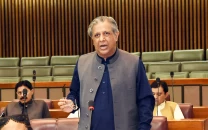Pakistan: Still one of the worst places in the world to be a woman
Pakistan is ignoring a significant portion of its huge workforce.

Yet, stark gender gaps persist in education, health and across economic sectors. According to the World Bank, women’s literacy remains low at 42%. The ratio of young literate females to males (age 15-24) is 74.85%. Only Afghanistan has a lower ratio. In 2008, Pakistan’s infant mortality rate and percentage of births attended by skilled health staff was worse than the South Asian average (73 vs 59 per 1,000 live births; and 39 vs 42 percent, respectively) ; while its total fertility rate was higher than the regional average (3.9 vs 2.9 births per woman). Thankfully this has fallen since then and now Pakistan has a fertility rate that is lower than most of its neighbours.
Given these challenges to their human capital development, women face severe constraints to their access to services in most sectors, and in their income-earning opportunities. Pakistan’s female labour force participation is lower than the regional average. The rate of women’s borrowing from Microfinance institutions is lower than any other South Asian country, including Afghanistan. Keeping in mind that women make up more than half of Pakistan’s population, this is a serious economic drawback.
Pakistan’s Second Poverty Reduction Strategy Paper has recognised that gender disparities pose a critical constraint to achieving country development objectives. The Country Partnership Strategy 2010-13, which is a WB initiative, works to help organise efforts and initiatives that help to restore some of the gender balance. According to the report, it now goes beyond emphasising gender in the context of human development and social protection. This is in part due to the influence of the 2010 Pakistan Gender-Sensitive Portfolio Review, which ascertained the degree to which gender was addressed across sectors – in 24 existing and 26 pipeline operations in the World Bank’s portfolio at the time. The Review found human development sectors to be significantly more advanced than economic sectors in their attention to gender issues and recommended common approaches for economic sectors to improve this situation.
Pakistan is still far from ideal when it comes to addressing gender inequality issues but there are significant efforts on the ground that may have more of an impact in the years to come. For example according to the World Bank’s Country Strategy partnership Reports 2010-2014 for Pakistan, research from 2011 reveals how Social Protection projects bring numerous benefits to women and children in vulnerable groups. Programmes that transfer cash to poor women – such as the Benazir Income Support Program that gives Rs1,000 Pakistan rupees a month to female heads of poor households – have been shown to improve these women‘s decision-making power. When these women have greater decision-making power, they are more likely to use reproductive health services; moreover, household investments shift from transportation and food to medical care, education, fuel and lighting, and footwear and clothing.
But more needs to be done than just increasing women’s representation in parliament. That alone will not be enough, especially if these women are unable to be a catalyst for change that will trickle downwards.
Published in The Express Tribune, July 2nd, 2012.



















COMMENTS
Comments are moderated and generally will be posted if they are on-topic and not abusive.
For more information, please see our Comments FAQ